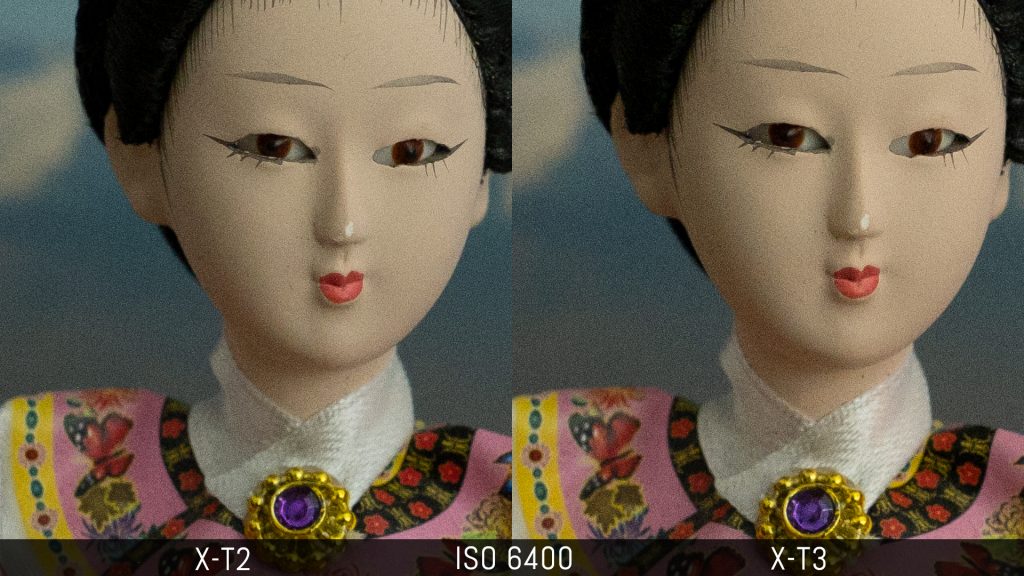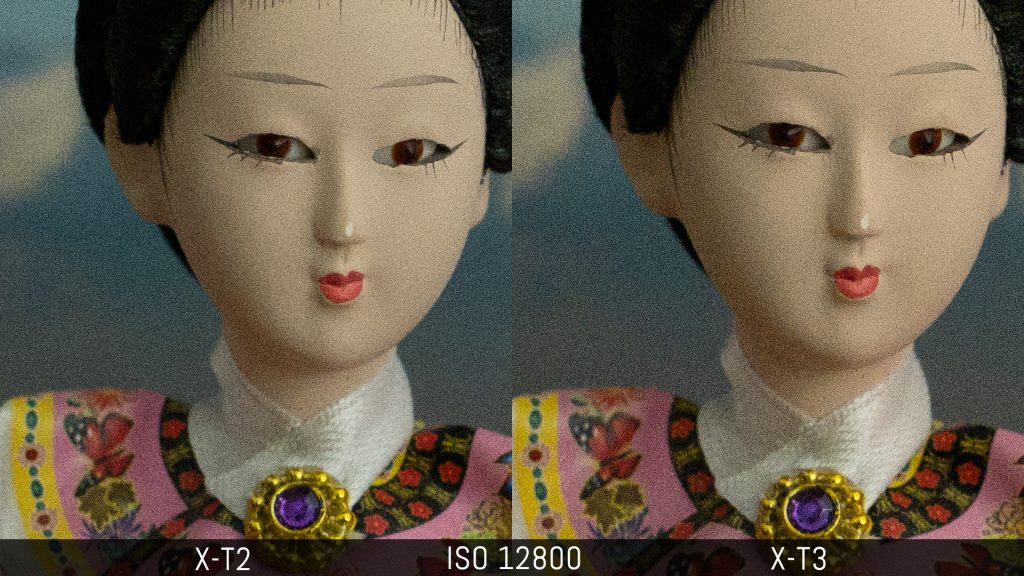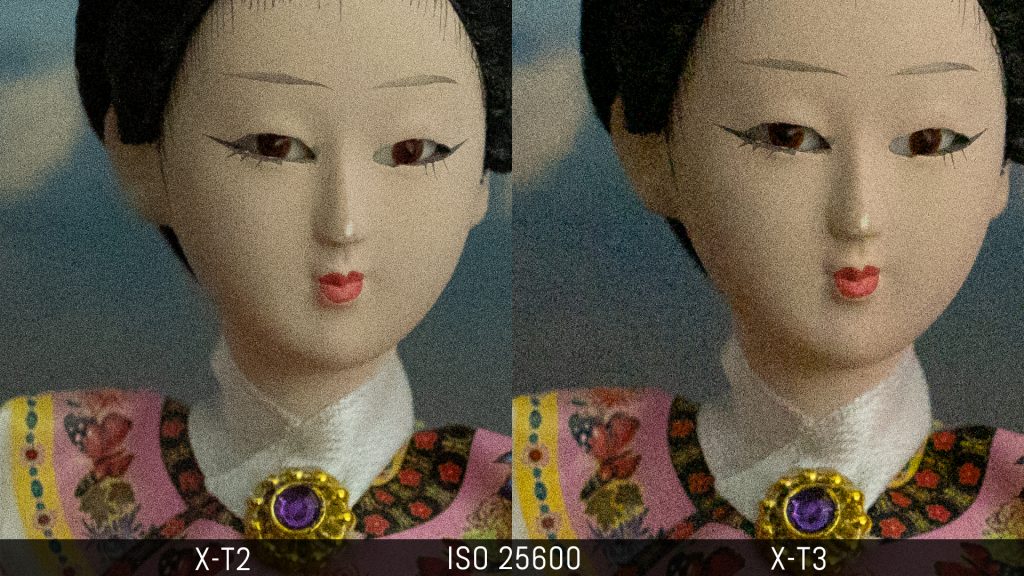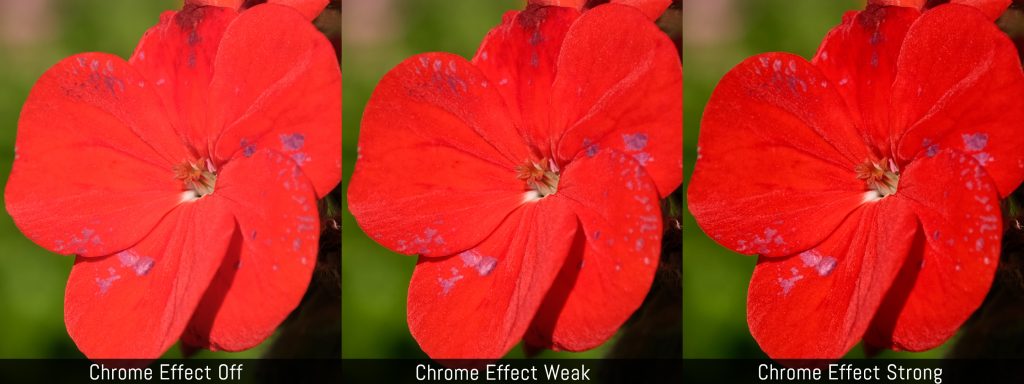The X-T30 is the third generation model in Fujifilm’s enthusiast range of mirrorless cameras, yet it shares many characteristics with the current flagship model, the X-T3. This makes it a very appealing option for those in search of a powerful camera body that won’t break the bank.
A second option, whose price has plummeted since the announcement of the X-T3, is the former flagship, the X-T2. It isn’t quite as powerful as the X-T30 but it does offer better handling, especially with the vertical battery grip attached.
If you are wondering which of these two models to go for, we hope this article will clear up some confusion!
Ethics statement: We tested a pre-production X-T30 sample at a press event in London and we owned a copy of the X-T2. Within the article, there are affiliate links. If you buy something after clicking one of these links, we will receive a small commission. To know more about our ethics, you can visit our full disclosure page. Thank you!
1. Design
The X-T30 could easily be mistaken for a smaller, more portable version of the X-T2 due to the striking similarities in their design. You can see how the dimensions differ by looking at the specifications below:
- X-T2: 507g | 132.5 x 91.8x 49.2mm (with battery and memory card)
- X-T30: 383g | 118.4 x 82.8 x 46.8mm (with battery and memory card)
In addition to the shutter speed, exposure compensation and drive dials present on both cameras, the X-T2 also has a four-way pad, a dedicated ISO dial and a metering dial. The X-T30 comes with a built-in pop-up flash whereas a separate speed-light is provided for the X-T2.
Both feature a hot shoe on top, a smattering of customisable buttons around the body, a S/C/M focus switch out front, and an AF joystick on the rear.
Three features that make the X-T2 the more appealing choice for professionals are: the larger grip, the dust, moisture and freeze proof chassis, and the dual SD card slot that is compatible with UHS-II standards.
Whereas the X-T2 is only available in black and graphite silver, the X-T30 will be available in three colour variations: black, silver and charcoal.
2. Electronic viewfinder
The X-T2 uses a 2.36 million dot viewfinder with 0.77x magnification and a minimum lag of 5ms. It is 0.5-inch large with a a 23mm eye-point.
The X-T30 has the same resolution as the X-T2 but it has a smaller magnification (0.62x) and a smaller panel (0.39 inches). The eye-point isn’t specified but it is likely the same as the X-T20 (17.5mm). Fujifilm hasn’t released any information about the lag either.
Both offer a 100% field of view and a 100fps refresh rate in Boost mode.
3. Articulating LCD screen
The X-T30 and X-T2 both sport a 3-inch LCD monitor with a resolution of 1040K dots and a 3:2 aspect ratio. However only the X-T2’s screen can tilt up, down and to the side for vertical shooting. The X-T30, by comparison, employs the standard two-way tilting type which is 1.3mm thinner than other articulating Fujifilm screens.
The X-T30’s screen is also touch sensitive unlike that of the X-T2. It can be used to select the AF point, focus, take a picture, swipe through images in playback mode and select options on screen. It is the most responsive touch screen from Fujifilm we’ve tested to date.
4. Sensor
The X-T30 and X-T2 both house an APS-C sized X-Trans sensor but that of the X-T30 is more recent. It uses the X-Trans IV type with 26.1MP and a backside illumination structure (BSI), which is the same sensor found inside the X-T3. The older X-T2 utilises the X-Trans III 24.3MP type.
Whereas the X-T2 has a native ISO sensitivity range of 200 – 12800 plus extended 100 and 51200 values, the X-T30’s native range is 160 – 12800 with extended values down to 80 and up to 51200.
Our image quality comparison between the X-T2 and X-T3 revealed that there weren’t many differences between the two sensors even though the IV generation sensor has a BSI structure. The most recent sensor produces a little less noise when recovering the shadows, whereas the third generation sensor is a little less noisy at high ISOs.

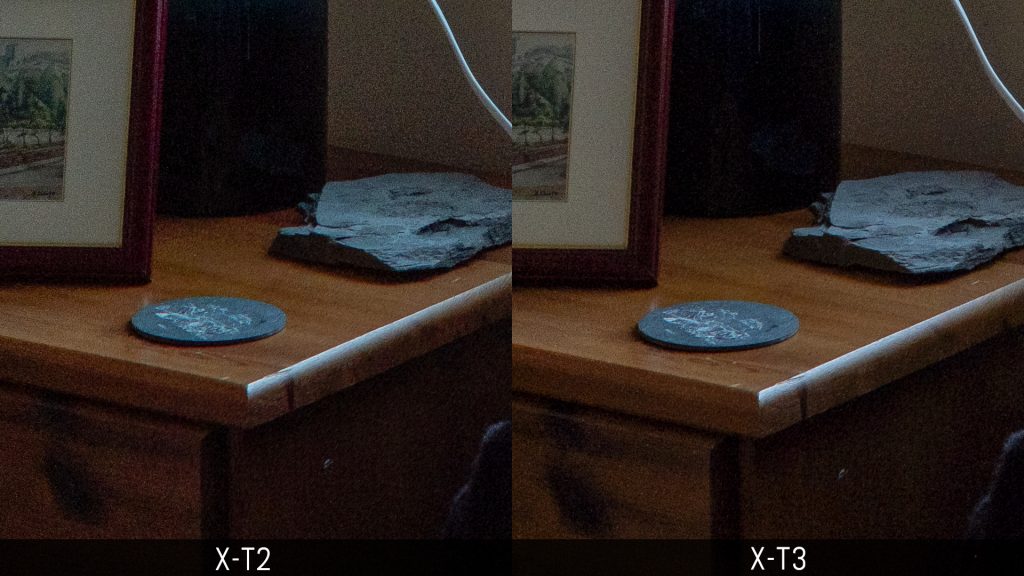
5. Autofocus system
The X-T2 and X-T30 are both equipped with an intelligent hybrid autofocus system but the X-T30 benefits from the latest upgrades.
For example, the number of points has increased to 117 on a 13×9 grid (or 425 on a 17×25 grid) on the X-T30, up from 91 areas on a 13×7 grid (or 325 points on a 13×9 grid) on the X-T2. These phase detection points cover almost the entire sensor on the X-T30 whereas on the X-T2, they are limited to the centre.


Some other advantages to the new X-T30 autofocus algorithm include:
- phase detection AF in low light down to -3EV (the X-T2 is rated at -1EV)
- non-stop phase detection AF even if there is a great distance between two subjects (e.g. one is close to the camera and the other is far away)
- exposure level remains constant even if a person with black hair enters the frame
- better face and eye detection for stills and video (eye detection now available in 4K with C-AF; smaller faces can be tracked)
- ‘face selection’ lets you select a face using the LCD or joystick
Both models feature Fujifilm’s AF-C Custom Settings which let you fine-tune the behaviour of the autofocus system according to the manner in which the subject moves.
In our thorough tests with the X-T3 – which uses the same AF system as the X-T30 – we found that has the most reliable autofocus performance of any X series camera to date. Not only is it more reactive for birds in flight, but it also provided better results with older lenses featuring a non-linear motor such as our trusty XF 35mm f/1.4. We expect to encounter identical, if not slightly better results when we test the X-T30 out in the field given the algorithm tweaks. (Note: These updates will come to the X-T3 via firmware update in April 2019.)
6. Burst shooting and blackout-free live view
The X-T2 is able to shoot up to 8fps with the mechanical shutter or 14fps with the electronic shutter. The mechanical speed climbs to 11fps if you attach the vertical battery grip but the electronic speed stays the same.
The X-T30, despite being a mid-range model, boasts more impressive specifications by comparison, being capable of 8fps with the mechanical shutter or 20fps with the electronic shutter. Turn on the 1.25x crop mode and the speed rises to 30fps, albeit with a reduction in resolution (16.6MP).
Even more interesting is that the X-T30 offers a blackout-free uninterrupted live view with the e-shutter with a refresh rate of 40Hz (or 60Hz in crop mode). This sets it apart from the vast majority of other mirrorless cameras that show you a live view with blackouts or the last image in a sequence instead.
It is possible to have AF/AE tracking at all speeds with either camera.
7. Video
Something that may come as a surprise is that the X-T30 is a better video camera than the X-T2.
Although both cameras can record in 4K up to 30fps, the X-T30 has a few advantages. First, it comes with the Cinema 4K/DCI option, which in the movie projection industry is the dominant 4K standard. Second it downsamples 6K-worth of data to 4K by reading the entire width of the sensor, whereas the X-T2 performs a crop of 1.17x. Finally it offers a higher maximum data rate (200Mbps vs 100Mbps) at this resolution.
Internal recording is 4:2:0 8-bit on both cameras but only the X-T30 can deliver 4:2:2 10-bit colour depth via the HDMI port. The X-T2 is capped at 4:2:2 8-bit by comparison.
In 1080p, both cameras can record in High Frame Rate mode up to 120fps and conform slow motion in-camera. However the X-T30 continues to enjoy the upper hand: it has a faster data rate (200 vs 100Mbps) and better quality, although the latter comes at the cost of a 1.29x sensor crop.
Both have internal F-Log but only the X-T30 offers the ETERNA film simulation mode and DR settings for video.
You can see the full list of video-related differences by looking at the list below:
X-T2
- 4K up to 30fps
- No Cinema 4K/DCI
- 4K up to 100Mbps
- 1.17x sensor crop in 4K
- 10min per clip in 4K
- 1080p up to 100Mbps
- 1080p in 16:9
- 15min per clip in 1080p
- 1080p up to 120fps
- No sensor crop in 1080p/120p (line-skipping)
- H.264/IPB codec
- Internal recording in 4:2:0 8-bit
- External recording in 4:2:2 8-bit
- F-Log
X-T30
- 4K up to 30fps
- Cinema 4K/DCI up to 30fps
- 4K up to 200Mbps
- No sensor crop in 4K
- 10min per clip in 4K
- 1080p up to 200Mbps
- 1080p in 16:9 or 17:9
- 15min per clip in 1080p
- 1080p up to 120fps
- 1.29x sensor crop in 1080p/120p
- H.264/IPB codec
- Internal recording in 4:2:0 8-bit
- External recording in 4:2:2 10-bit
- F-Log, Eterna, HLG, DR settings
The following compilation demonstrates the video quality of the X-T2:
You can see some footage shot with the X-T30 in our hands-on video below (from minute 7.21).
8. Battery grip and life
The VG-XT2 vertical battery grip for the X-T2 serves not only to prolong the battery life but also to improve the handling of the camera.
It holds two additional batteries, which can be useful for long days of shooting, and is completely weather-resistant. The grip features many of the controls found on the X-T2 body, including a shutter button, joystick, AE-L button, AF-L button, front and rear command dials, Q button and Fn button.
Fujifilm hasn’t produced an official battery grip for the X-T30 but you can purchase an optional grip extender such as the one listed in our accessory list.
The actual battery life of the X-T3 is rated at 340 frames, which is only a little less than the X-T30’s 380 frames. Both can be charged via USB. Thanks to its USB Type C port, the X-T30 also accepts power delivery while in operation.
9. Extra features
The X-T30 incorporates Bluetooth technology unlike the X-T2 which only has WiFi connectivity. It allows you to maintain a constant connection with your smart device without consuming too much battery power.
In addition to the ETERNA film simulation mode mentioned above, the X-T30 also features the new Monochrome Adjustment function and Colour Chrome Effect. The former gives your black and white images a cold or warm tone, whereas the latter provides deeper colours in highly saturated subjects.
The X-T30 also inherits the X-T3’s Pre-Capture and Sports Finder modes. With the former, you can record images to the buffer even before fully depressing the shutter button, whereas the latter crops your image down to 16.6MP and provides bright frame lines to show you the cropped area, allowing you to anticipate the moving subject before it enters the scene.
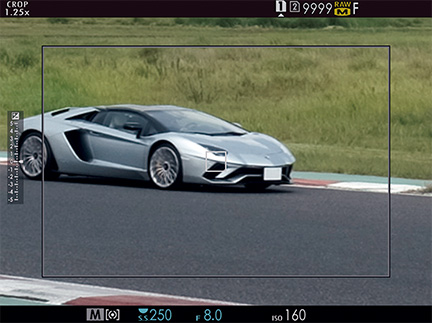
10. Price
Despite being older and less technologically advanced than the X-T30, the X-T2 remains the more expensive model. The current retail price for the body alone is just shy of $1100 US whereas the X-T30 debuts for $900. That being said, limited rebates or special deals could make the X-T2 more affordable at times. If we take into account the second-hand market, it might be easier to find it for less.
Conclusion
Having considered the various differences between the two models, it isn’t too difficult to draw a conclusion: if you want the more advanced model, the X-T30 is the more logical choice given that it has inherited so many of the high-end features found on the flagship X-T3 including the latest generation autofocus system, fast burst shooting with live view and no blackouts, and more advanced video capabilities. The camera is also very compact and lightweight, making it an ideal travel or street companion if you pair it with compact lenses.
That being said, if you’re mainly interested in still photography and don’t plan to shoot extreme sports or birds in flight on a regular basis, there are various reasons to consider the X-T2 instead. First, the image quality is more or less the same, so you won’t regret not having the latest sensor or image processor. Second there are concrete advantages to having a larger body, the additional physical dials, the larger EVF and weather-sealing. And while neither the AF nor the burst speeds are the best Fujifilm has to offer today, they remain more than enough for most applications.
Reminder: the links below are affiliate links. If you decided to buy something after clicking the link, we will receive a small commission.
Check the price of the Fujifilm X-T30 on B&H Photo
Check the price of the Fujifilm X-T2 on B&H Photo







